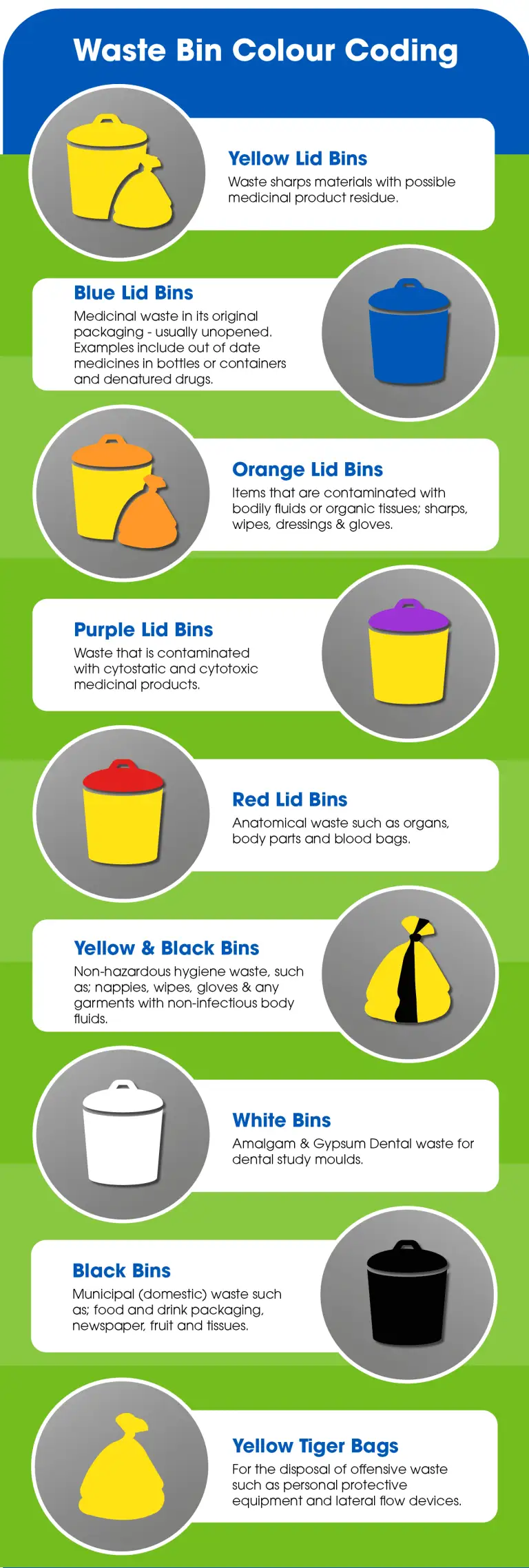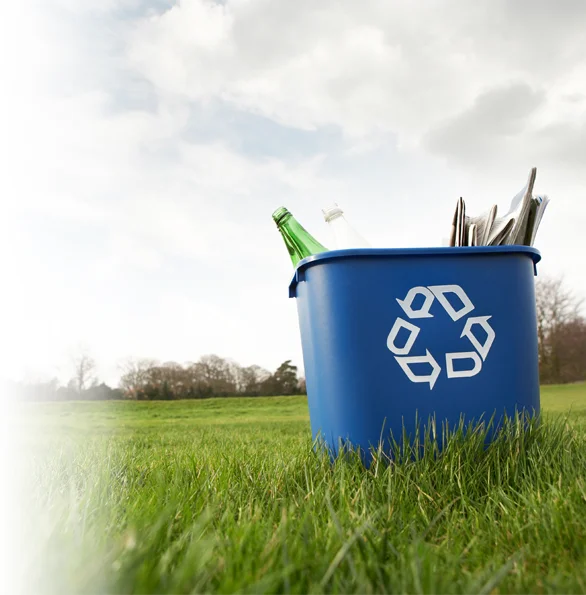Professionals are specially trained and equipped for the regular collection and management of clinical waste. But we pay little attention to where our waste goes after this point. In this blog, our experts explain what is involved in safe and handling of clinical waste to help you understand why it is important and where your clinical waste goes.
Table of Contents
What is the Clinical Waste Sorting Process?
The collection of clinical waste involves colour-coded containers, which highlight what should be disposed of within each container, as well as how and where they should be transported to for treating or disposal. The colours are organised depending on how hazardous or infectious the contents may be.
What is the Clinical Waste Colour Coding System?
The Department of Health has a strict colour coding system for the sorting of clinical waste.
It’s important when choosing a clinical waste disposal company to consider whether they adopt this process as mixing different types of waste is strictly prohibited.
Citron Hygiene adopts the system:
Yellow Lid Bins – Waste sharps materials with possible medicinal product residue.
Blue Lid – Medicinal waste in original packaging.
Orange Lid Bins – Items that are contaminated with bodily fluids or organic tissues; sharps, wipes, dressings & gloves.
Purple Lid Bins – Waste that is contaminated with cytostatic and cytotoxic medicinal products.
Red Lid Bin – Anatomical waste such as organs, body parts and blood bags.
Yellow & Black – Non-hazardous hygiene waste, such as; nappies, wipes, gloves and any garments with non-infectious body fluids.
Yellow Biohazard Bags – should be used to hold contaminated medical waste as well as chemicals and body fluids.
Black – Municipal (domestic) waste such as; food and drink packaging, newspaper, fruit and tissues.
White – Amalgam & Gypsum Dental waste for dental study moulds.
It is important that you put the right clinical waste in the correct containers as the next step is dependent on which category the contents fall under.
Clinical Waste Colour Coding Units.pdf
Clinical Waste Incineration
The majority of all clinical waste is incinerated, which is one of many waste-to-energy technologies available today. This is a waste treatment process that employs very high temperatures, resulting in the combustion of organic substances found in clinical waste materials.
During the thermal treatment, the incinerated materials are turned into nothing but gas, ash & heat. The high-temperature heat generated through incineration can then however be recycled as heat energy. The incineration process is also proven to reduce the mass of the original waste by more than 80%, as well as the volume of the waste by over 95%, leaving only a fraction of waste to ends up in a landfill site.


Clinical Waste Autoclave Sterilisation
The alternative to incineration is an autoclave sterilisation system. This is a required step for hazardous or infectious clinical waste materials that need to be treated before their safe landfill.
Although most surgical equipment have now become single-use items, it is still essential to treat contaminated items with great caution when considering their disposal.
Examples of clinical waste that requires autoclave sterilisation are; soiled dressings and garments, wipes, other general infectious waste and any other waste that belongs in an orange-lidded clinical waste bin.
Autoclave sterilisation units closely resemble giant pressure cookers. The process involves first shredding the waste, and then placing the infected clinical waste into a large steel vessel, which then pumps high-pressure saturated steam into the unit at temperatures of around 160 degrees. The high-pressured steam is then maintained for about 25 minutes whilst the hot air thoroughly kills all germs and other dangerous microorganisms.
The end product results in a disintegrated mass of non-hazardous fibrous material. Although autoclave systems do reduce the volume of waste by around 60%, only 17.5% of this residue is then available for recycling. The remainder of the non-hazardous waste is then transported to landfill sites or incineration plants.
Read more about our extensive range of specialist clinical waste disposal services available through our local clinical waste service centre locations across the UK.
Alternatively, learn what is classified as clinical waste and whether your business requires clinical waste disposal solutio
